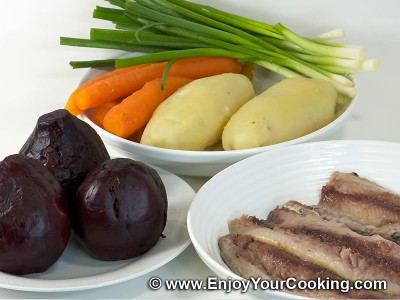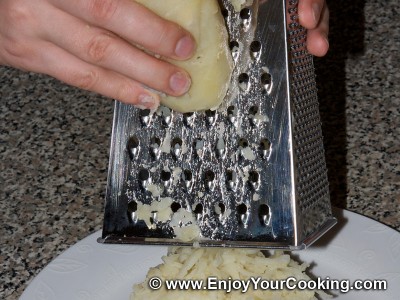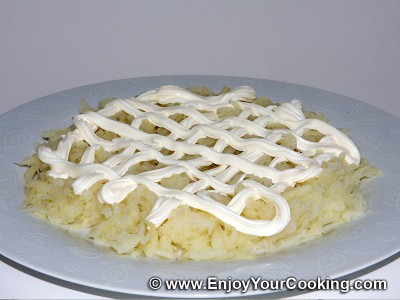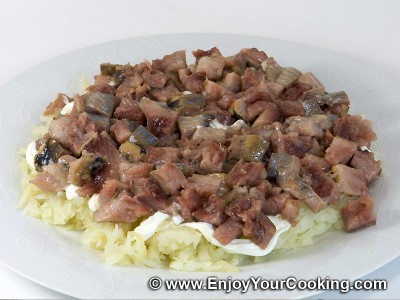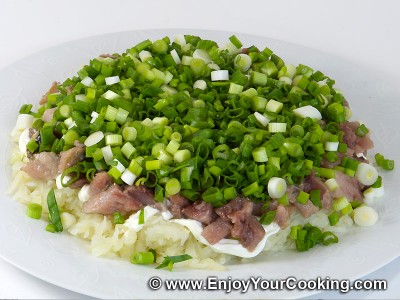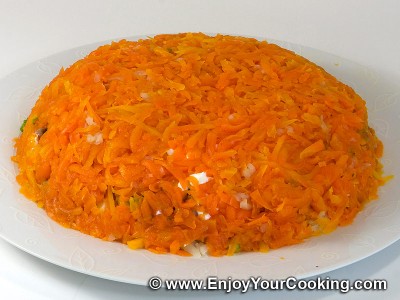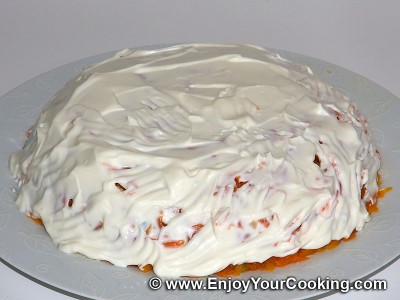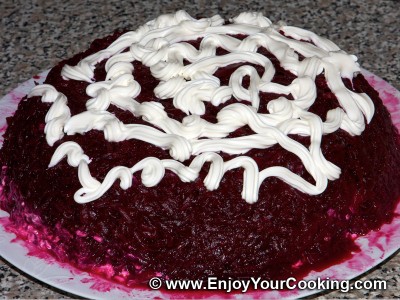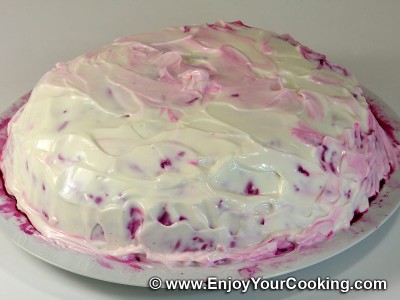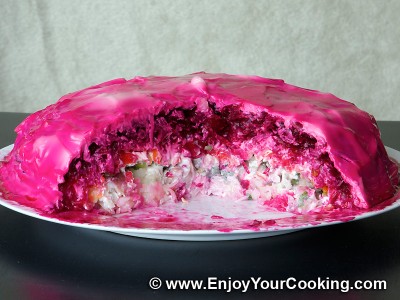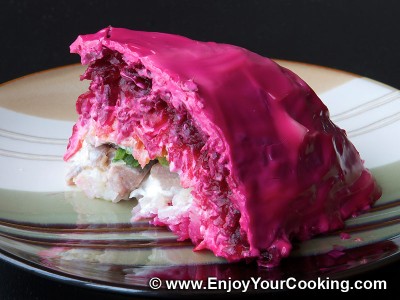Herring Under Fur Coat (Herring Salad)
June 27th, 2009 in Salad Recipes by Julia Volhina
Total
cooking time:
3hr
Herring
Under Fur Coat (Herring Salad) Recipe
To prepare Russian
herring salad, “Herring Under Fur Coat”, you need to have whole salted
herring. And of course you need to know how to fillet it, so read this post
if you don’t.
Herring
Under Fur Coat
is a word-to-word translation of russian name of this salad: “Seledka pod
Shuboj”, which represents salted herring under a “coat” of boiled vegetables.
So, as you’ve probably guessed, you will also need boiled vegetables (potatoes,
carrots and beats) and green onions. In the rest, this is 5-layers salad with a
lot of mayonnaise.
This salad requires
some time and agility to assemble it, also it needs at least 12 hours for
layers to soak after it is assembled. So make sure you have enough time
before you plan to serve it.
Ingredients:
- 1
big or 2 small whole herrings (pickled with a salt)
- 1
big potato
- 3-4
middle size carrots
- 3
medium size beets
- Bunch
of green onions
- Mayonnaise
How to make,
step-by-step:
1. Prepare ingredients:
boil carrots, potatoes and beets for salad, let them cool till room temperature
and skin; fillet salted herrings:
Herring
Under Fur Coat (Herring Salad) Recipe: Step 1
2. Take big flat plate,
grate boiled potato on big slots of grater and form round layer in the middle
of the plate (make sure you have about 2 inches left till the edges of the
plate):
Herring
Under Fur Coat (Herring Salad) Recipe: Step 2
3. Dress layer of grated
potato with mayonnaise (yes, you need liquid mayo which is easy to pour):
Herring
Under Fur Coat (Herring Salad) Recipe: Step 3
4. Dice herring fillets
(and pick bones if you see any) and layer it above potato:
Herring
Under Fur Coat (Herring Salad) Recipe: Step 4
5. Add chopped green
onions as third layer and dress with mayonnaise:
Herring
Under Fur Coat (Herring Salad) Recipe: Step 5
6. Cover whole thing
with an even layer of boiled carrots grated on big slots, use your hands to
form the shape:
Herring
Under Fur Coat (Herring Salad) Recipe: Step 6
7. Spread mayonnaise on
the surface:
Herring
Under Fur Coat (Herring Salad) Recipe: Step 7
8. Cover whole thing
with an even layer of boiled beets grated on big slots:
Herring
Under Fur Coat (Herring Salad) Recipe: Step 8
9. And again cover it
with mayonnaise:
Herring
Under Fur Coat (Herring Salad) Recipe: Step 9
10. Let salad to rest at
room temperature for 2 hours, after put it to the fridge. Prepare this salad in
advance, it needs at least several hours of “rest” after assembled so layers
can soak juices of each other and mayonnaise. I usually prepare this salad night
before I am planning to serve it:
Herring
Under Fur Coat (Herring Salad) Recipe: Step 10
11. Herring Under Fur
Coat
or Seledka pod Shuboj (how it is called in Russian) is ready to be
served:
Herring
Under Fur Coat (Herring Salad) Recipe
Bon
Appetit!

